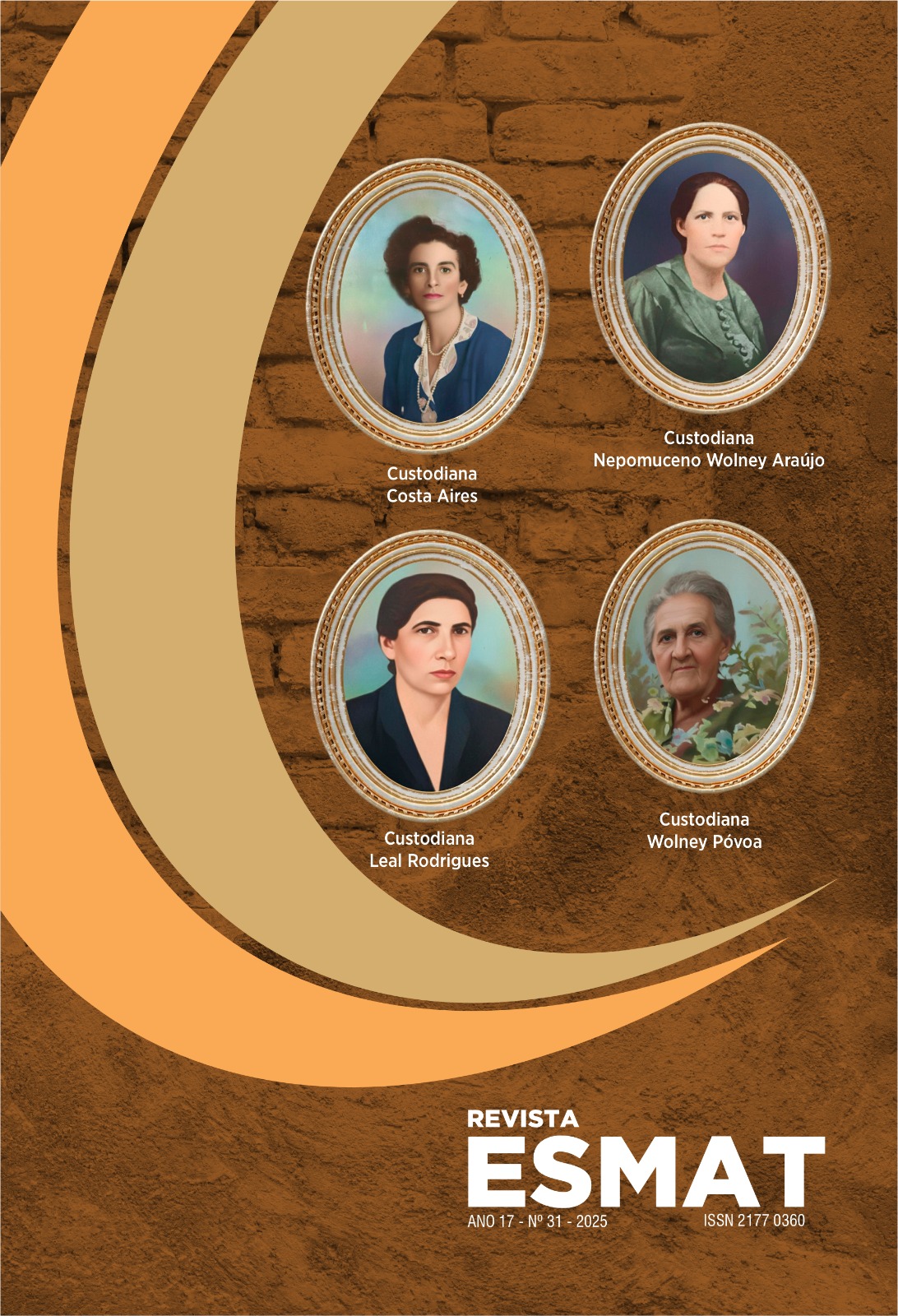Abstract
This study addresses female incarceration in Brazil from a gender perspective,focusing on a critical analysis of the situation of imprisoned women in light of the 1988Federal Constitution, the Law on Penal Execution (LEP), international human rights treaties,and the jurisprudence of the Federal Supreme Court, particularly the decision issued inHabeas Corpus 143.641/SP. The research is qualitative, exploratory, and bibliographic innature, with the general objective of analyzing the challenges and prospects for ensuring the rights of women deprived of liberty, considering their specificities and vulnerabilities. Thestudy highlights the structural and normative shortcomings of the Brazilian prison system inmeeting the needs of women, especially regarding motherhood, health, family life, and humandignity. The STF’s decision in HC 143.641/SP is presented as a landmark in recognizing theprotection of motherhood and childhood in prison, aligning with Hegel’s philosophicalperspective on the centrality of the family and social well-being. The paper also discusses thelimitations of the ruling, as it does not extend to convicted women in closed or semi-openregimes, and proposes the expansion of alternative penalties and public policies aimed at thesocial reintegration of incarcerated women. The study concludes with a call for therestructuring of the Brazilian penal system, focusing on social justice, gender equality, and therealization of fundamental rights.References
ABRAMOVAY, Pedro V. O grande encarceramento como produto da ideologia
(neo)liberal. In: ABRAMOVAY, Pedro V., BATISTA, Vera M. (org). Depois do Grande
Encarceramento. Rio de Janeiro: Revan, 2010.
ANDRADE, Vera Regina P. de. Pelas Mãos da Criminologia – O controle penal para
além da (des)ilusão. Rio de Janeiro: Revan, 2012.
ATIENZA, Manuel. As razões do direito: teorias da argumentação jurídica. 3. ed. São
Paulo: Landy, 2006
BATISTA, Vera M.. Depois do Grande Encarceramento. In: ABRAMOVAY, Pedro V.,
BATISTA, Vera M. (org). Depois do Grande Encarceramento. Rio de Janeiro: Revan, 2010.
BONAVIDES, Paulo. Curso de Direito Constitucional, 23ª ed. atual. e ampl., São Paulo:
Malheiros, 2008.
BRASIL. Supremo Tribunal Federal (STF). Habeas Corpus n. 143.641/SP. Relator: Min.
Ricardo Lewandowski. Julgado em: 20 fev. 2018. Disponível em:
https://redir.stf.jus.br/paginadorpub/paginador.jsp?docTP=AC&docID=7531930. Acesso em:
jun. 2025.
FERNANDES, Luana S., MIYAMOTO, Yumi M. H. A (in)visibilidade da perspectiva de
gênero no sistema Penitenciário Capixaba. Tribuna Virtual do Instituto Brasileiro de
Ciências Criminais. Ano 01, Ed. 3, abr. de 2003.
FOUCAULT, Michel. Vigiar e Punir: nascimento da prisão. Tradução de Raquel
Ramalhete, 11ª ed. Petrópolis: Vozes, 1994.
HEGEL, Georg Wilíelm Friedrich. Princípios da filosofia do direito; tradução Orlando
Vitorino. - São Paulo : Martins Fontes, 1997.
KENT, Jorge. La Criminalidad Feminina. ¿Madres e hijos em prisión? La degradante
complejidad de uma atribulada problemática. Argentina: AD. HOC, 2007.
MENEGAT, Marildo. Prisões a Céu Aberto In: ABRAMOVAY, Pedro V., BATISTA, Vera
M. (org). Depois do Grande Encarceramento. Rio de Janeiro: Revan, 2010.
ONU. Declaração Universal dos Direitos Humanos, de 10 de dezembro de 1948. Genebra:
___. Conjunto de Princípios para a Proteção de Todas as Pessoas Sujeitas a Qualquer
Forma de Detenção ou Prisão. Genebra: 1988.
___. Convenção contra a Tortura e outros Tratamentos ou Penas Cruéis, Desumanas ou
Degradantes. Genebra: 1984.
___. Pacto Internacional sobre Direitos Civis e Políticos, 16 de dezembro de 1966.
Genebra: 1948.
___. Princípios Básicos sobre a Utilização da Força e de Armas de Fogo pelos
Funcionários Responsáveis pela Aplicação da Lei. Havana: 1990.
___. Regras das Nações Unidas para o Tratamento de Mulheres Presas e Medidas não
Privativas de Liberdade para Mulheres Infratoras (Regras de Bangkok). Bangkok. 2010.
___. Regras Mínimas das Nações Unidas para o Tratamento de Presos (Regras de
Mandela). Resolução A/RES/70/175, aprovada em 17 de dezembro de 2015. Nova Iorque:
ONU, 2015.
___. Regras Mínimas Para o Tratamento de Prisioneiros. Genebra: 1955.
OEA. Convenção Americana de Direitos Humanos, de 22 de dezembro de 1969. San José
de Costa Rica, 1969.
PEREIRA. Letícia G. Mulheres Presidiárias e sua Vivência da Maternidade. Monografia
de Especialização. Universidade Católica de Brasília, 2010.

This work is licensed under a Creative Commons Attribution-NonCommercial 4.0 International License.
Copyright (c) 2025 ESMAT Magazine

